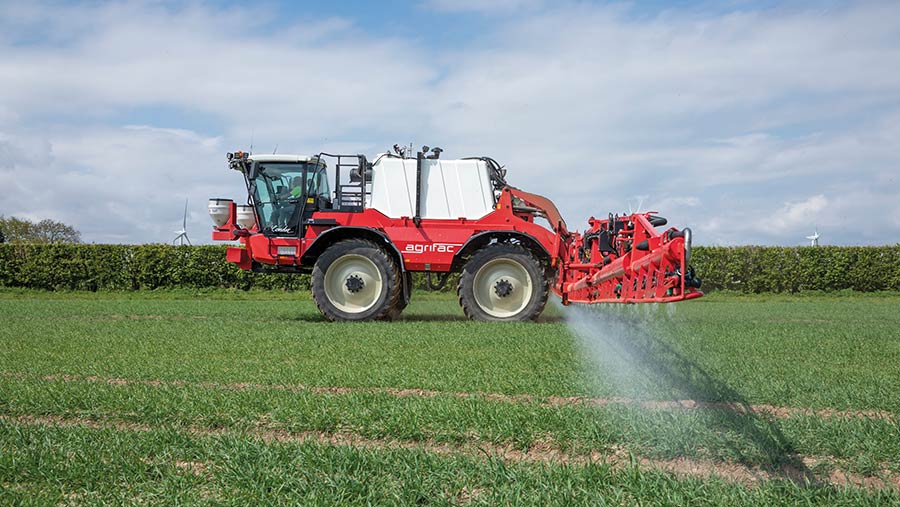Why timing is key to maximise wheat tillers with phosphite
 © Gary Naylor
© Gary Naylor Growers are being advised not to leave it too late when applying phosphite-based biostimulants to maximise the number of tillers in wheat crops.
Trials over several years show that phosphites can be particularly beneficial for improving tiller retention in winter wheat, providing they are applied early enough in the season.
See also: Cornish growers trial septoria test to target fungicide use
Hutchinsons technical manager Dick Neale says this is because phosphites effectively trick root tips into thinking they are short of phosphate, which in turn stimulates an increase in lateral root development.
For this to have a beneficial effect on yield, phosphites must be applied in time to build root mass before plants start to shed tillers, so autumn and growth stage 30 are the best timings, he explains.
“Wheat plants generally want to throw off 40% of their tillers between growth stage 30 and 31 as they sort out what can be supported through to harvest.
“Signals from the roots indicating the availability of nutrients play a key role in this process, so if we can increase root mass and the plant’s ability to extract soil nutrients, they will retain more tillers. More tillers clearly leads to more grains/sq m at harvest.”
Yield benefit
In Hutchinsons trials, two applications of Phorce in autumn and at growth stage 30 gave a yield benefit of 0.5t/ha over the untreated plot.
Once wheat gets beyond growth stage 31, applying phosphite has little or no effect, as plants will have dropped tillers by this point, he warns.
Growers should therefore always use growth stage to determine application timing for biostimulants, rather than going by fungicide timings, he says.
For example, if the T1 fungicide timing is used as the cut-off, this will be too late for biostimulants to work effectively, as many T1s are applied at growth stage 32, by which time tillers will have been lost.
Mitigate take-all effects
Plants with strong root systems and a better ability to take up nutrients are likely to be healthier and more resilient to stress, foliar diseases and lodging, says Mr Neale.
He highlights research that shows how applying biostimulants to build more root mass can also mitigate the effects of take-all.
“This might be particularly relevant this year, as there are a lot of crops that are effectively second wheats, as they followed spring barley or spring wheat growers were forced to drill last season.”
